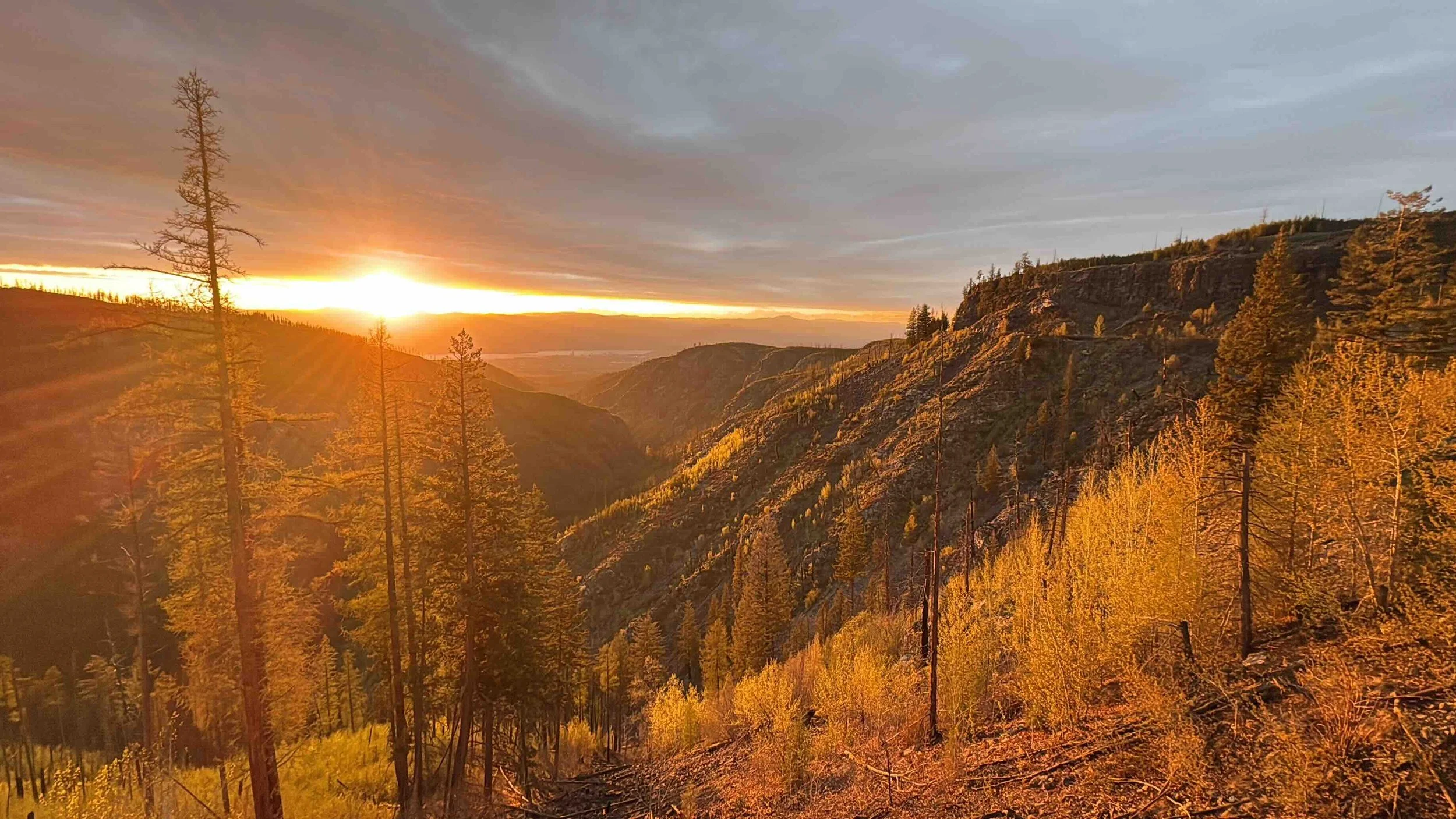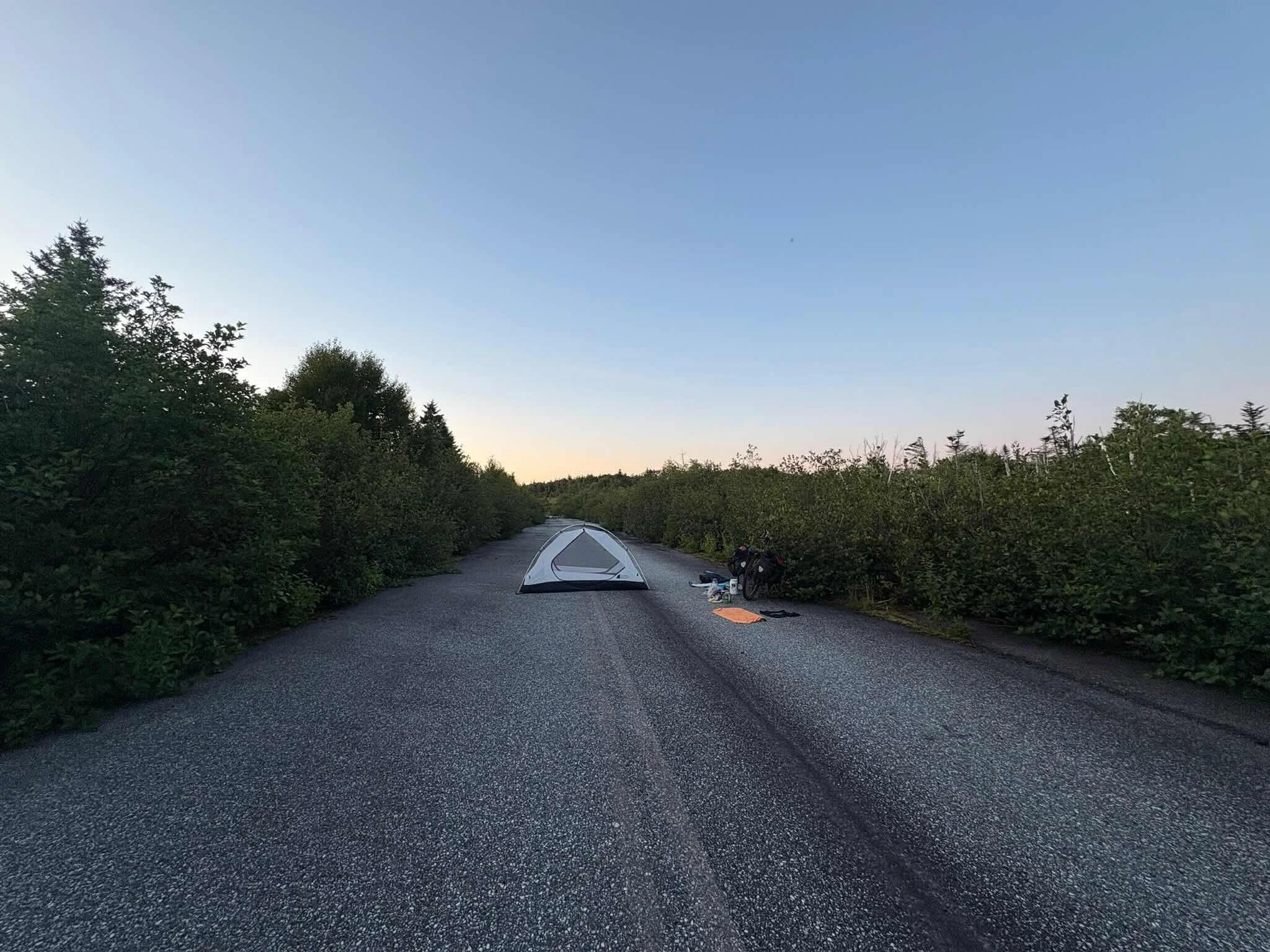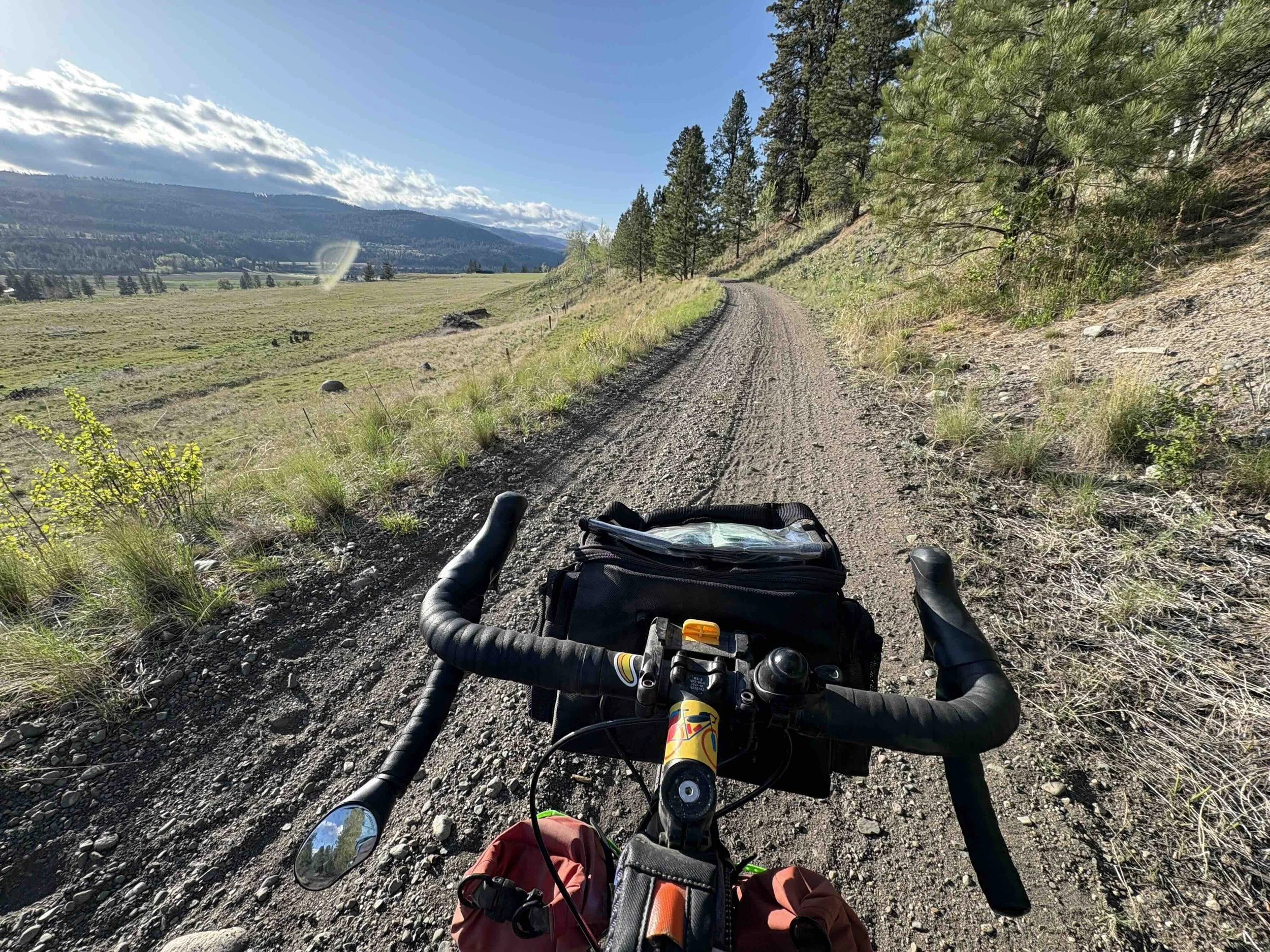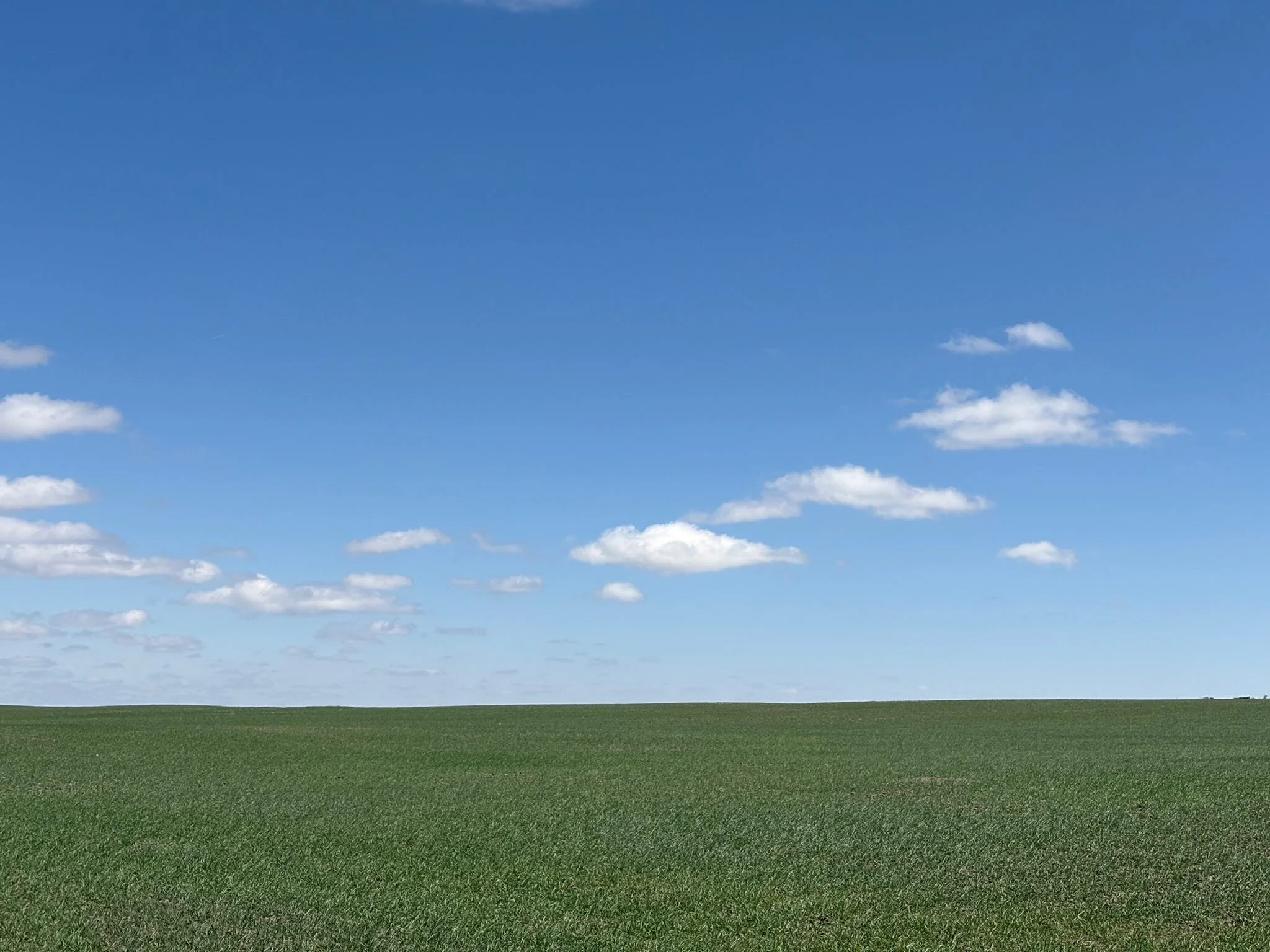Don’t Overthink It - Felix Frühling Bikes Across Canada
Felix Frühling
He biked 10,191 kilometres across Canada in 117 days . Steveston local talks about his cross-country bike trip—the highs and lows, and what he learned about himself along the way.
Cover image provided by Felix Frühling.
In this Q&A, Steveston People creator Tania Reitsma asks Felix’s about his experience. Introduction and closing thoughts by Tania.
What did you get up to this year?
As we quickly approach the end of 2025, I try to recall what I accomplished in the past months. Working at my desk, laundry, clipping my kid’s nails, sleep, eat, and repeat—nobody wants to read about that! Luckily I’ve got a neighbour with a more fascinating story to share. His name’s Felix Frühling, and this summer the 20-year-old Stevestonite took a solo trip across Canada—on his bicycle.
Starting from the west in Victoria, British Columbia, Felix cycled 10,191 kilometres over 117 days to St John’s, Newfoundland. Not only did he cross each Canadian province, he also ventured through three US states, Minnesota, Wisconsin and Michigan due to the Kenora fire in Ontario next to the Trans Canada highway.
Back in one piece with a few new scars and plenty of memories, Felix is now putting together a documentary about his journey while also attending his final year in Langara College’s photography program.
All ready for his Q&A at Sanctuary Cafe, a favourite hangout for cyclists in Steveston.
For the interview, I arranged for us to meet at the Sanctuary Cafe, a favourite Steveston hangout for cyclists. I thought it was a pretty clever move, but ironically Felix had never been there before. Anyways, I had a lovely time interviewing this cool and calm introvert who comes across carefree and wise at the same time.
Is biking your thing? Whether your answer is “yes” or “no”—that’s not the point here. Just take a moment to read Felix’s story and you’ll discover universal messages about letting go of worries, building self-confidence, and the value of living “the simple life”.
And now, onto the interview…
Why did you decide to bike across Canada?
I don’t really have a good answer for that. I always liked going on little adventures but obviously nothing this big before.
Since I wanted to explore the country and meet new people, this seemed like a great way to do it because it’s relatively budget-friendly and involves a lot of surviving in the woods and being alone which I enjoy.
Starting from Point Zero, Victoria, BC. Image provided by Felix Frühling.
Were you always into biking?
It was only in the past year or so that I really got into biking. Working on the Gulf Islands, I had to commute by bike. There’s a huge hill about eighteen kilometres one way, so I kind of got into biking through that and little weekend trips camping around the surrounding islands.
Then I got into more biking throughout the year by commuting to school, and doing three to four hundred kilometres a week in the eight to nine months before the trip to prepare.
Prior to that I did long distance running with the local Kajaks track and field club for a long time through high school.
I’ve always enjoyed solo endurance sports so biking was a good next step. I’m an introvert so I really like doing sports alone and being able to push myself as far as I can go without the need to rely on anyone else.
Myra Canyon, Kelowna, BC. Image provided by Felix Frühling.
Did you plan your route for the trip?
I tried to plan out a route at first, but gave up on it because it’s so hard to plan out an entire county's worth of routing. There’s always going to be road closures and that sort of thing. So I ended up not planning a route and just going east. There was a wild fire east of Winnipeg, the Kenora fire in Ontario, so I had to go south through the United States. I went through Minnesota, Wisconsin and Michigan on the south side of Lake Superior.
Learning to play the ukulele, camping on the shores of Lake Superior. Image provided by Felix Frühling.
What I did plan out was all the gear I wanted to bring such as water filters and all the stuff to survive in the woods off-grid for a couple of days at a time. The bike was about 105 pounds with everything on it.
Did you have anyone to guide you through the planning process?
Not really. YouTube videos of other people doing similar styles of trips showing what they packed and what went wrong were helpful, but I honestly didn’t even really know how to fix a flat tire before I started.
Camping on an old section of the Trans Canada Highway in Newfoundland. No sleeping mat, so hard core—actually it popped. Image provided by Felix Frühling.
The first time I got a flat tire on the road, I was on a rail trail in the middle of nowhere without cell service. If I couldn’t figure out how to fix it, I’d be stuck there. It took about an hour and a half to two hours to fix my first flat tire. Though I was prepared with all the tools, in hindsight there could have been a little more preparation.
Who was taking footage and documenting your trip?
It was only me the whole time documenting it, which meant a lot of stopping on the side of the road, setting up the camera, and then biking past, that sort of thing. I didn’t give up on those shots, and it was a lot of work to do that, but I’m glad that I documented it now.
I’m able to look back on it when I’m editing it, and it’ll be something that I’ll look back at for the rest of my life.
Mac the Moose, Moosejaw, Saskatchewan. Image provided by Felix Frühling.
What were the high points and low points of your trip?
There were definitely a lot of low points and a lot of high points. Some of the high points would be the BC backcountry. Those logging roads were so beautiful. To be able to spend a couple days out there was amazing.
Kettle Valley Trail before Penticton, BC. Image provided by Felix Frühling.
As far as low points, there were many. One in particular was in Ontario while going down the Trans Canada Trail. There were black flies everywhere that bite little chunks out of your skin. At one point I had seven or eight black flies biting my hands at the same time, so I tried to swipe them off but crashed the bike.
My mountain bike pedals shredded up my leg and I still have the scar from that. There was really nothing you could do at that moment because you’re off the bike, black flies are still biting you, your leg is bleeding all over the place, and you have to keep going because there’s no other choice.
The mosquitos were bad too! Eyelid swollen shut for two days after a mosquito bite on PEI. Image provided by Felix Frühling.
Did you set yourself a daily goal for the distance you wanted to ride?
The goal was roughly an average of 100 kilometres each day. Some days I would bike 80 kilometres and other days I would bike 180 kilometres with the weather being the main factor. On a nice day when the temperature was good, I’d do a bunch of extra and then take it off on those harder days where it’s raining, there’s a thunderstorm, heatwave, lighting, flooding, or whatever.
There were a couple points where there would be a foot of water on top of the road and I would have to bike through it very slowly. A lot of major weather events made things a lot harder.
Trans Canada Highway in Alberta. Image provided by Felix Frühling.
What was your experience when you arrived in the towns?
I always have to stop at a grocery store and usually a bike shop. I would have the same conversation with people probably fifteen to thirty times a day. People would ask me at the grocery store, “What are you doing?” They were always really interested, helpful and nice.
Any tips for someone with similar aspirations to bike across the country?
Don’t overthink the planning stage. It’s easy to get caught up in the beginning stages where you’re figuring out where you want to go and what gear to bring which can be very overwhelming. It is important to do a test trip beforehand for several nights camping with everything you’re going to bring and probably to learn how to fix a flat tire first! But don’t overthink it too much as it’s not super complicated.
Red Cliffs at North Cape, Prince Edward Island. Image provided by Felix Frühling.
Once you’re on the road, life is simple when your only worries are water, food, and mechanical issues. It’s a lifestyle that I enjoy living, just being on the road, having a very simple life.
Speaking of food, what was on your menu while on the road?
I’m probably not the best person to ask about keeping a balanced nutrition during these types of trips. It gets very questionable when you have to eat 6,000 calories a day.
My normal nutrition consisted of a few packets of instant oats for breakfast, peanut butter and jelly wraps for lunch, which was about a third of half a jar of peanut butter, and really just whatever I felt like because you need to have food that you enjoy eating too.
Bon appétit! Yes, that’s one of the peanut butter and pepperoni stick wraps that Felix ate for 3-days straight in BC. Image provided by Felix Frühling.
I had alfredo pasta every single night one hundred days in a row. Some days I would survive on a whole package of Oreos, a bunch of carbs, and protein powder. It was very much down to whatever the cheapest and largest quantity of food I could get. I didn’t have a budget but managed to stay under $25 per day while on the road.
In the first two weeks I lost some weight but managed to gain it all back by the end and stay around the same level.
How did you get home?
To conclude my journey, my dad came to meet up with me and together we biked into Cape Spear, the easternmost point of North America. Afterwards, I packed up my bike to fly home. But since there was the Air Canada strike, we took a little road trip to wait out the three days.
Felix’s dad Nick (left) met up and biked with Felix into Cape Spear, the easternmost point of North America. Image provided by Felix Frühling.
Once home, did it feel weird to reintegrate into society?
Definitely. That’s a good question. From not seeing any people for multiple days in a row, I went to a summer camp with hundreds of people right after I got back. Talking to people every minute of every day was a huge adjustment for me because you kind of forget how many people talk to each other.
Stickers: “Alone Time” and “Cape Spear” the easternmost point in Canada.
I don’t know, it’s weird coming back into society. On the road, my only real concerns were food, water, mechanical issues, and the weather on my trip, but in the city there’s a lot more I need to focus on. It feels a little overwhelming.
What did this experience teach you?
When you have to solve all of your own problems while traveling across the country, you learn to be self-reliant. In time you gain confidence in being able to fix problems so you don’t worry about them.
At the beginning when something goes wrong on the bike and you have to figure it out for the first time, that could be very stressful. Once I got three flats in one day and ran out of spare tubes, so I had to start patching the tubes with duct tape. You’re about twenty to thirty kilometres out from the town and if you can’t patch it and run out of food and water, you have to walk to the next town. It’s very much like what stress was built for—survival.
Back home in Steveston, Richmond, BC.
Outside of your biking life, what are you working on?
Outside of the biking trips, I’m a photographer studying at Langara College in Vancouver. Right now, I mostly do freelance work because I don’t have much time. I’m in my last two semesters of that program and will have to figure out what type of job I want to do after that. I’ll probably do a few more bike trips in my future before I get too old for it.
Where would you like to bike to next?
The next trip I want to do is up through Alaska and then maybe down towards Mexico. But I think this next year, somewhere around Tuktoyaktuk at the tip of the Northwest Territories would be my next move.
Dreaming about the next big adventure.
Where can people learn more about your cross-country bike adventure?
Right now I’m editing a documentary about the bike trip, which is my main project. I filmed every single day for the entire trip, so I’m focusing on getting that out. The documentary will be screened at my school at the theatre at Langara College first, then out on YouTube to share with more people.
My website is www.felixfruhling.com and my Instagram handle is @felix.fruhling.
You can check out all my stuff there including posts from all across the country and clips from each province of my favourite shots.
Thank you, Felix, for sharing about your incredible cross-country biking experience. I can’t wait to see your documentary when it comes out! Also, a special thank you to Felix’s parents Andrea and Nick for connecting me with your son. You must be super proud!
See Felix’s work
Bonus random thoughts…
See, I told you that Felix had an interesting story to tell! Now that the Q&A is done, you’re free to go.
But if you want to stick around to read my post-interview random thoughts, here they are:
First, respect to all the introverts. I love that “Alone Time” sticker! Even though you’re hiding out somewhere, doing your own thing—as an introvert myself, I see and appreciate you all. Next, where’s the fibre at? A questionable diet indeed. How would my body respond to Felix’s on-the-road menu? I wouldn’t want to find out. Finally, what’s my own version of living a “simple life”? In my day-to-day reality of adulting and parenting, how can I shed some of the unnecessary worries and live more in the moment?


















